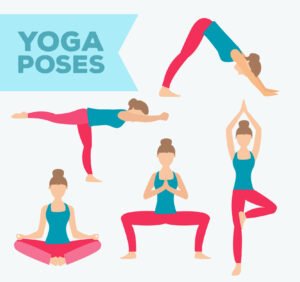what are the most effective ways to burn belly fat at home
Table of Contents

what are the most effective ways to burn belly fat at home
what are the most effective ways to burn belly fat at home What is the fastest way to lose belly fat at home? What burns the most belly fat at home? How to reduce belly fat in 7 days at home? How to get a flat tummy fast naturally? How to get a flat tummy in 2 days? Can I slim down in 7 days? How to slim down a tummy? How to have a flat tummy? Can walking reduce belly fat? What is the 30 30 30 rule? Why is belly fat so hard to lose? Why can't I get a flat stomach?
what are the most effective ways to burn belly fat at home
Burning belly fat primarily involves a combination of a healthy diet, regular exercise, and lifestyle changes. Here are some effective strategies you can implement at home:what are the most effective ways to burn belly fat at home
1. Balanced Diet:
Focus on whole, unprocessed foods like fruits, vegetables, lean proteins, and whole grains. Limit your intake of sugary beverages, refined carbohydrates, and processed foods.What diet burns the most belly fat?
ten foods that may help burn belly fat include
Incorporating certain foods into your diet can support your efforts to burn belly fat. Here are ten examples:- Avocados: Rich in healthy fats, avocados can help keep you feeling full and satisfied, reducing the likelihood of overeating. They also contain fiber and various nutrients that support overall health.
- Leafy Greens: Vegetables like spinach, kale, and Swiss chard are low in calories but high in fiber, which can promote satiety and aid in weight loss. They also provide essential vitamins and minerals.
- Berries: Berries such as strawberries, blueberries, and raspberries are packed with antioxidants and fiber, making them a great choice for weight management. Their natural sweetness can also satisfy cravings for sugary snacks.
- Lean Protein: Foods like chicken breast, turkey, fish, tofu, and legumes are excellent sources of lean protein. Protein helps build and repair tissues, supports muscle growth, and increases satiety, all of which can contribute to fat loss.
- Greek Yogurt: High in protein and probiotics, Greek yogurt can help regulate digestion and promote a healthy gut microbiome. Opt for plain, unsweetened varieties to avoid added sugars.
- Nuts and Seeds: Almonds, walnuts, chia seeds, and flaxseeds are rich in healthy fats, protein, and fiber. They can help keep you feeling full between meals and provide essential nutrients.
- Oats: Oats are a good source of soluble fiber, which can help reduce belly fat by promoting feelings of fullness and stabilizing blood sugar levels. Choose steel-cut or rolled oats over processed varieties.
- Green Tea: Green tea contains compounds like catechins and caffeine, which may help boost metabolism and increase fat burning. Drinking green tea regularly as part of a balanced diet and exercise routine may aid in weight loss.
- Apple Cider Vinegar: Some studies suggest that consuming apple cider vinegar may help reduce belly fat by promoting feelings of fullness and decreasing calorie intake. However, more research is needed to confirm its effectiveness.
- Chili Peppers: Spicy foods like chili peppers contain capsaicin, a compound that may boost metabolism and increase fat burning. Adding a little heat to your meals can help support your weight loss efforts.
2. Portion Control:
Pay attention to portion sizes to avoid overeating. Using smaller plates and bowls can help control portion sizes.Can I lose weight with just portion control?
Portion control can be an effective strategy for weight loss when combined with a balanced diet and regular physical activity. By monitoring the amount of food you eat at each meal and snack, you can create a calorie deficit, which is necessary for weight loss. Here’s how portion control can help you lose weight:- Calorie Management: Portion control helps regulate your calorie intake by ensuring you consume an appropriate amount of food for your body’s energy needs. Consuming fewer calories than you expend leads to weight loss over time.
- Prevents Overeating: Portion control encourages mindfulness about eating habits, helping you avoid overeating or consuming more calories than you realize. By paying attention to portion sizes, you can better regulate your food intake.
- Flexibility: Portion control allows for flexibility in food choices. You can still enjoy a variety of foods, including some treats, as long as you control the portion sizes and overall calorie intake.
- Sustainability: Unlike restrictive diets that eliminate entire food groups, portion control is sustainable in the long term. It promotes a balanced approach to eating, which can be maintained even after reaching your weight loss goals.
- No Food Restrictions: Portion control doesn’t require you to eliminate specific foods from your diet. Instead, it emphasizes moderation and balance, allowing you to enjoy your favorite foods in appropriate portions.
15 simple Exercise for beginners to lose weight at home
15-simple-exercise-for-beginners-to-lose-weight-at-home
3. Stay Hydrated:
Drink plenty of water throughout the day. Sometimes thirst can be mistaken for hunger, leading to unnecessary snacking.Does hydrating help burn fat?
Hydrating itself doesn’t directly burn fat, but staying well-hydrated is important for overall health and can indirectly support weight loss efforts in several ways:
- Appetite Control: Drinking water before meals can help you feel fuller, leading to reduced calorie intake during meals and potentially aiding in weight loss.
- Calorie-Free Hydration: Unlike sugary beverages like sodas or juices, water is calorie-free. Choosing water over high-calorie drinks can help reduce overall calorie intake, which is essential for weight loss.
- Boosts Metabolism: While drinking water doesn’t significantly boost metabolism in the long term, some studies suggest that drinking cold water may temporarily increase metabolic rate as your body works to warm the water to body temperature.
- Supports Exercise Performance: Staying hydrated is crucial for optimal exercise performance. When you’re properly hydrated, you may be able to exercise more effectively and for longer durations, potentially burning more calories during workouts.
- Flushes Toxins: Adequate hydration supports kidney function and helps flush waste and toxins from the body. This can support overall health and may indirectly contribute to weight loss by promoting proper bodily functions.
- Reduces Water Retention: Paradoxically, drinking more water can help reduce water retention. When your body is adequately hydrated, it’s less likely to hold onto excess water weight.
24 Foods and Drinks To Avoid for Weight Loss
24-foods-and-drinks-to-avoid-for-weight-loss
4. Regular Exercise:
Incorporate both cardiovascular exercises (such as brisk walking, jogging, cycling, or swimming) and strength training exercises (like bodyweight exercises, weightlifting, or resistance band workouts) into your routine. Aim for at least 150 minutes of moderate-intensity aerobic activity or 75 minutes of vigorous-intensity activity per week, along with muscle-strengthening activities on two or more days a week.What’s the best exercise to lose belly fat?
There isn’t a single “best” exercise to target belly fat specifically, as spot reduction is not possible. However, a combination of cardiovascular exercises, strength training, and core exercises can help reduce overall body fat, including fat around the abdomen. Here are some effective exercises to incorporate into your routine:- Cardiovascular Exercises: Activities that get your heart rate up and burn calories are essential for overall fat loss. Examples include:
- Brisk walking
- Jogging or running
- Cycling
- Swimming
- Jumping rope
- High-intensity interval training (HIIT)
- Strength Training: Building lean muscle mass through strength training can boost your metabolism and help you burn more calories even at rest. Compound exercises that target multiple muscle groups are particularly effective. Examples include:
- Squats
- Lunges
- Deadlifts
- Bench presses
- Pull-ups or lat pulldowns
- Push-ups or chest presses
- Rows
- Core Exercises: While spot reduction isn’t possible, strengthening your core muscles can help improve the appearance of your midsection and support better posture. Include exercises that target the abdominals, obliques, and lower back, such as:
- Planks (including side planks)
- Bicycle crunches
- Russian twists
- Leg raises
- Mountain climbers
- Flutter kicks
- Total Body Workouts: Incorporating full-body workouts that engage multiple muscle groups can help you burn more calories and promote overall fat loss. Exercises like burpees, mountain climbers, and kettlebell swings are great additions to your routine.
- Consistency and Variety: Consistently engaging in a variety of exercises and challenging your body with progressive overload (gradually increasing the difficulty of your workouts) is key to seeing results over time.
14 simple things that give immense positive and healthy energy
14-simple-things-that-give-immense-positive-and-healthy
5. High-Intensity Interval Training (HIIT):
HIIT workouts involve short bursts of intense exercise followed by brief rest periods. They can help increase calorie burn and improve cardiovascular health in a shorter amount of time.High-Intensity Interval Training (HIIT) burn belly fat
Yes, High-Intensity Interval Training (HIIT) can be an effective way to burn belly fat and promote overall weight loss. HIIT involves alternating short bursts of intense exercise with brief periods of rest or lower-intensity activity. Here’s how HIIT can help with burning belly fat:- Increased Calorie Burn: HIIT workouts typically involve short bursts of high-intensity exercises that elevate your heart rate significantly. This intense effort burns a higher number of calories in a shorter amount of time compared to steady-state cardio exercises, such as jogging at a moderate pace.
- Elevated Metabolism: HIIT workouts can elevate your metabolism for hours after the workout, a phenomenon known as excess post-exercise oxygen consumption (EPOC) or the “afterburn” effect. This means you continue to burn calories even after you’ve finished exercising, contributing to overall fat loss.
- Preservation of Lean Muscle: HIIT workouts can help preserve lean muscle mass while promoting fat loss. Unlike steady-state cardio, which may lead to muscle loss over time, HIIT helps maintain muscle mass, which is important for a healthy metabolism.
- Reduction of Visceral Fat: Visceral fat, the type of fat that accumulates around internal organs, is particularly harmful and is associated with an increased risk of various health conditions, including heart disease and type 2 diabetes. HIIT has been shown to effectively reduce visceral fat, including belly fat.
- Time Efficiency: HIIT workouts are typically shorter in duration compared to traditional steady-state cardio sessions but can provide similar or even greater benefits in terms of fat loss. This makes HIIT a time-efficient option for individuals with busy schedules.
14 Fitness Tips for Busy Professionals
14-fitness-tips-for-busy-professionals
6. Core Exercises:
While spot reduction is not possible, strengthening your core muscles can help improve the appearance of your midsection. Include exercises like planks, Russian twists, bicycle crunches, and leg raises in your routine.Will core exercises burn belly fat?
Core exercises alone are not sufficient for spot reduction of belly fat. Spot reduction, the idea that you can target fat loss in specific areas of the body through exercise, is a common misconception. While core exercises can strengthen and tone the muscles in your abdominal area, they won’t directly burn the fat covering those muscles.
However, core exercises can still be beneficial for overall fat loss and improving the appearance of your midsection in conjunction with a comprehensive fitness and nutrition plan. Here’s how core exercises can contribute to a healthier body composition:
- Muscle Building: Core exercises like planks, crunches, and leg raises target the muscles in your abdomen, obliques, and lower back. Building lean muscle mass through strength training can boost your metabolism and help you burn more calories throughout the day, contributing to overall fat loss.
- Improved Posture: Strengthening your core muscles can improve your posture, which can make your midsection appear slimmer and more toned. Good posture also helps prevent back pain and reduces the risk of injury during other exercises and daily activities.
- Functional Strength: A strong core is essential for performing everyday tasks and other exercises with proper form. Functional core strength can improve your overall fitness level and make it easier to engage in other physical activities, which can indirectly support weight loss efforts.
- Stability and Balance: Core exercises often involve stabilizing your body, which can improve balance and coordination. This can enhance your performance in other exercises and activities, allowing you to work out more effectively and burn more calories.
- Mind-Body Connection: Many core exercises require concentration and focus, helping to strengthen the mind-body connection. This can improve your overall awareness of your body and its movements, leading to more efficient workouts and better results over time.
For a week, I would meditate for 10 minutes before working-out each day. Here’s what happen to my body and mind.
i-would-meditate-for-10-minutes-before-workout-each-day
7. Get Sufficient Sleep:
Aim for 7-9 hours of quality sleep per night. Poor sleep can disrupt hormones that regulate appetite and metabolism, potentially leading to weight gain, including around the belly area.Does sleep help you lose belly fat?
Yes, getting sufficient sleep is crucial for overall health and can indirectly support weight loss efforts, including reducing belly fat. Here’s how adequate sleep can contribute to a healthier body composition:
- Regulation of Hunger Hormones: Sleep deprivation can disrupt the balance of hunger hormones, leading to increased appetite and cravings for high-calorie, sugary foods. Ghrelin, the hormone that stimulates appetite, tends to increase with insufficient sleep, while leptin, the hormone that signals fullness, decreases. This imbalance can lead to overeating and weight gain, including belly fat accumulation.
- Metabolic Regulation: Sleep plays a role in regulating metabolism, including how your body processes and stores energy. Chronic sleep deprivation can impair metabolic function, leading to decreased insulin sensitivity, increased blood sugar levels, and a higher risk of developing insulin resistance and type 2 diabetes. Proper sleep supports metabolic health and may help prevent excess fat storage, including around the abdomen.
- Stress Reduction: Adequate sleep is essential for managing stress levels. Chronic stress can trigger the release of cortisol, a hormone associated with increased appetite and fat storage, particularly in the abdominal area. By prioritizing sleep and reducing stress, you can help regulate cortisol levels and support a healthier body composition.
- Muscle Recovery and Repair: Sleep is crucial for muscle recovery and repair, especially after exercise. Quality sleep promotes the release of growth hormone, which aids in tissue repair and muscle growth. Engaging in regular exercise, including strength training, can help build lean muscle mass, which can contribute to a higher metabolic rate and reduced belly fat over time.
- Overall Health and Well-Being: Chronic sleep deprivation is associated with various health conditions, including obesity, heart disease, and metabolic syndrome, all of which can contribute to belly fat accumulation. Prioritizing quality sleep is essential for overall health and can support your weight loss and fitness goals.
The best time to exercise to lose weight according to trainers
the-best-time-exercise-to-lose-weight-according-to-trainers
8. Manage Stress:
Chronic stress can contribute to weight gain and belly fat accumulation. Practice stress-reducing techniques such as deep breathing, meditation, yoga, or spending time on hobbies you enjoy.Manage Stress burn belly fat
Managing stress can indirectly support efforts to reduce belly fat and achieve a healthier body composition. Chronic stress can contribute to weight gain and fat accumulation, particularly around the abdomen, through various mechanisms. Here’s how stress management can help:- Reduced Cortisol Levels: Chronic stress triggers the release of cortisol, a hormone that regulates metabolism and energy balance. Elevated cortisol levels are associated with increased appetite, cravings for high-calorie foods, and fat storage, particularly in the abdominal area. By managing stress through relaxation techniques, such as deep breathing, meditation, or mindfulness, you can help lower cortisol levels and reduce the risk of excess belly fat.
- Healthy Coping Strategies: Stress often leads to emotional eating or unhealthy coping behaviors, such as binge eating, comfort eating, or relying on high-calorie, sugary foods for temporary relief. Developing healthier coping strategies for managing stress, such as exercise, spending time outdoors, practicing hobbies, or seeking social support, can prevent emotional eating and support weight loss goals.
- Improved Sleep Quality: Chronic stress can disrupt sleep patterns, leading to sleep disturbances or insomnia. Poor sleep quality, in turn, exacerbates stress levels and increases the risk of weight gain and belly fat accumulation. By implementing stress management techniques and establishing a relaxing bedtime routine, you can improve sleep quality and support overall health and well-being.
- Mindful Eating: Stress can interfere with mindful eating practices, leading to mindless snacking, overeating, or consuming calorie-dense foods without awareness. By cultivating mindfulness and awareness around eating habits, you can better regulate food intake, make healthier choices, and prevent weight gain. Techniques such as mindful eating, which involve paying attention to hunger and fullness cues, savoring flavors, and practicing gratitude for food, can support weight loss efforts.
- Regular Exercise: Exercise is a powerful stress reliever and can help reduce cortisol levels, improve mood, and promote relaxation. Engaging in regular physical activity, whether it’s cardiovascular exercise, strength training, yoga, or tai chi, can help manage stress and support weight loss goals. Aim for at least 150 minutes of moderate-intensity aerobic activity or 75 minutes of vigorous-intensity activity per week, along with muscle-strengthening activities on two or more days a week.
14 health benefits of coconut water
14-health-benefits-of-coconut-water
9. Limit Alcohol Consumption:
Alcoholic beverages are often high in calories and can contribute to belly fat. Limit your intake and opt for healthier alternatives like water or herbal tea.Does alcohol increase belly fat?
Yes, alcohol consumption can contribute to the accumulation of belly fat and overall weight gain, particularly when consumed in excess. Here’s how alcohol consumption can impact belly fat:
- Caloric Content: Alcoholic beverages are calorie-dense, containing empty calories with little to no nutritional value. Consuming alcoholic drinks adds extra calories to your diet without providing essential nutrients, potentially leading to weight gain if not compensated for by reducing calorie intake from other sources.
- Metabolism: The body prioritizes metabolizing alcohol over other macronutrients like carbohydrates, proteins, and fats. As a result, excess alcohol consumption can disrupt metabolic processes, leading to increased fat storage, particularly in the abdominal area.
- Appetite and Food Choices: Alcohol can stimulate appetite and reduce inhibitions, leading to overeating or making poor food choices. This can result in consuming additional calories from snacks or unhealthy foods, further contributing to weight gain and belly fat accumulation.
- Liver Health: Excessive alcohol consumption can impair liver function, leading to fatty liver disease and metabolic disturbances. A compromised liver may have difficulty metabolizing fats efficiently, leading to increased fat storage, including in the abdominal region.
- Hormonal Effects: Alcohol consumption can disrupt hormone regulation, including insulin sensitivity and cortisol levels. Elevated cortisol levels, in particular, are associated with increased abdominal fat deposition, known as visceral fat.
- Genetics and Gender: Genetics and individual differences in metabolism can influence how alcohol affects weight gain and fat distribution. Additionally, gender plays a role, as men tend to store excess fat in the abdominal area more than women, a pattern exacerbated by alcohol consumption.
12 Healthy Herbal Teas You Should Try
12-healthy-herbal-teas-you-should-try
10. Be Patient and Consistent:
Remember that losing belly fat takes time and consistency. Focus on making sustainable lifestyle changes rather than quick fixes or crash diets.Be Patient and Consistent burn belly fat
Absolutely! Being patient and consistent is crucial when it comes to burning belly fat or achieving any fitness goal. Here’s why patience and consistency are key:- Realistic Expectations: Healthy, sustainable weight loss typically occurs gradually, at a rate of 1-2 pounds per week. Rapid weight loss is often unsustainable and can lead to muscle loss, nutrient deficiencies, and rebound weight gain. By setting realistic expectations and understanding that progress takes time, you’re more likely to stay motivated and committed to your goals.
- Lifestyle Changes: Burning belly fat and achieving a healthier body composition require long-term lifestyle changes, including adopting a balanced diet, regular exercise routine, adequate sleep, stress management, and hydration. These changes take time to implement and become habits. Consistency is key to making sustainable changes that lead to lasting results.
- Plateaus and Setbacks: Weight loss progress is rarely linear, and you may experience plateaus or setbacks along the way. This is normal and to be expected. Patience and consistency are essential during these times to stay focused on your goals and continue making healthy choices.
- Building Habits: Consistency helps you build healthy habits that become ingrained over time. Whether it’s meal prepping, scheduling regular workouts, or practicing stress-reduction techniques, repeating these behaviors consistently reinforces positive habits that support your weight loss journey.
- Adaptation and Progression: Over time, your body adapts to your exercise routine and dietary changes. Consistently challenging yourself with progressive workouts, varying your exercise routine, and adjusting your diet as needed are essential for continued progress and preventing weight loss plateaus.
- Long-Term Health: Patience and consistency aren’t just about reaching a specific weight or body composition; they’re about prioritizing your long-term health and well-being. Sustainable weight loss is associated with numerous health benefits, including reduced risk of chronic diseases like heart disease, diabetes, and certain cancers.
Post Views: 387























2 comments